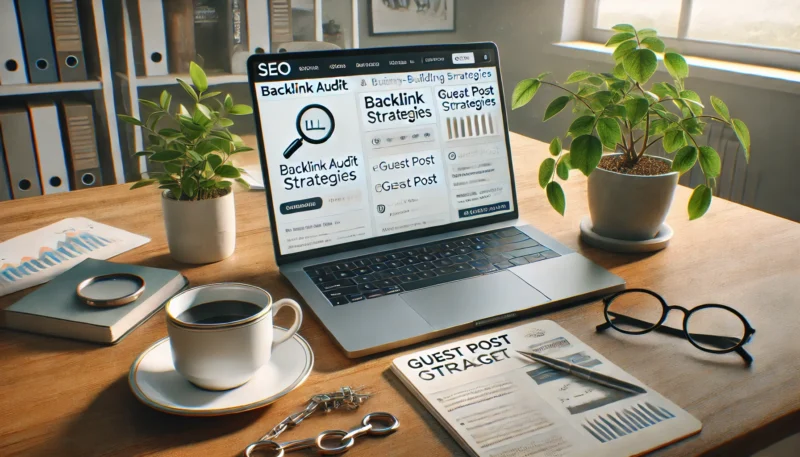Backlinks are one of the most powerful ranking signals in Google’s algorithm. When done right, they can significantly boost your site’s authority and search visibility. But if done wrong, backlinks can trigger penalties that wipe out your rankings overnight.
In 2025, the key to successful link building is quality over quantity — and earning links that Google actually values.
In this article, you’ll learn how to build backlinks safely, ethically, and effectively, without risking your SEO performance.
What Are Backlinks and Why Do They Matter?
A backlink is a link from one website to another. Google sees backlinks as votes of confidence — if authoritative sites link to you, it’s a signal that your content is trustworthy and valuable.
High-quality backlinks help you:
-
Improve keyword rankings
-
Boost domain authority
-
Get more organic traffic
-
Build credibility in your niche
But not all links are good. Spammy, paid, or manipulative links can do more harm than good.
Common Backlink Mistakes That Lead to Penalties
-
Buying links from shady sites
-
Participating in link exchanges or PBNs (private blog networks)
-
Using automated link-building tools
-
Getting links from irrelevant or low-quality websites
-
Over-optimizing anchor text (using exact-match too often)
Google’s algorithm — and manual review teams — are smarter than ever. If a link looks unnatural, it could be flagged.
10 Safe and Smart Ways to Build Backlinks in 2025
1. Create High-Quality, Link-Worthy Content
The foundation of natural backlinks is great content. People link to content that is:
-
In-depth and informative
-
Unique or original
-
Visually helpful (infographics, charts, data)
-
Solves a specific problem or answers a common question
✅ Tip: Publish original research or long-form guides — they tend to earn links naturally over time.
2. Guest Posting (The Right Way)
Guest posting still works — if your goal is value, not just links.
-
Target reputable, niche-relevant blogs
-
Offer high-quality, unique content
-
Use natural, contextual links (avoid over-optimization)
✅ Avoid: Low-quality blogs that accept any guest post just to sell links.
3. Build Relationships in Your Niche
Backlinks often come from real relationships. Connect with other creators, bloggers, and brands.
-
Comment on their posts
-
Share their content
-
Reach out with genuine interest (not just to ask for a link)
Networking opens doors for co-marketing, features, and collaborations.
4. Use HARO and Journalist Requests
Help a Reporter Out (HARO) connects journalists with sources. By answering queries in your niche, you can get backlinks from major publications.
✅ Other platforms: Terkel, SourceBottle, Qwoted
5. Broken Link Building
This method involves finding broken links on other sites and suggesting your content as a replacement.
Steps:
-
Find relevant content with broken links (use tools like Check My Links or Ahrefs)
-
Create or identify similar content on your site
-
Reach out to the site owner and recommend your resource
✅ It’s helpful, scalable, and avoids link schemes.
6. Publish Ultimate Guides and Resource Lists
Comprehensive, well-organized content tends to attract citations. Try formats like:
-
“The Ultimate Guide to [Topic] in 2025”
-
“Top 50 Free Tools for [Audience]”
-
“[Niche] Checklist: Everything You Need”
✅ Promote them after publishing to get them in front of the right eyes.
7. Get Featured on Podcasts and Interviews
Podcasts often include backlinks in their show notes. Reach out to relevant hosts and offer to share your story, expertise, or insight.
✅ You can also interview others on your platform, and they’ll likely link back.
8. Create Linkable Assets
Not every blog post is link-worthy, but assets are:
-
Infographics
-
Tools and calculators
-
Templates
-
Data studies
-
Interactive content
These resources naturally attract backlinks — especially if they’re useful and well-designed.
9. Use Internal Linking to Support New Pages
While not backlinks in the traditional sense, internal links can help pass authority to new content and guide search engines to crawl them.
✅ Always connect new posts to relevant older content.
10. Disavow Toxic Links (If Necessary)
If your site has been targeted by negative SEO or has a history of shady link building, use Google’s Disavow Tool carefully.
✅ Only disavow links if you’re certain they’re harming your site — and always try to remove them first by contacting the source.
Bonus: How to Monitor Your Backlinks
Use tools like:
-
Ahrefs (Backlink profile, Referring domains)
-
SEMrush
-
Google Search Console
-
Moz Link Explorer
✅ Regularly audit your backlinks to check for broken links, spammy sources, or lost links you can reclaim.
Final Thoughts: Focus on Value, Not Volume
Backlink building in 2025 is all about earning trust — not gaming the algorithm. One high-quality, relevant link from an authority site is more powerful than 100 spammy ones.
Stay away from shortcuts. Focus on creating helpful content, building genuine relationships, and promoting your brand with integrity. That’s how you earn links that actually move the needle.

